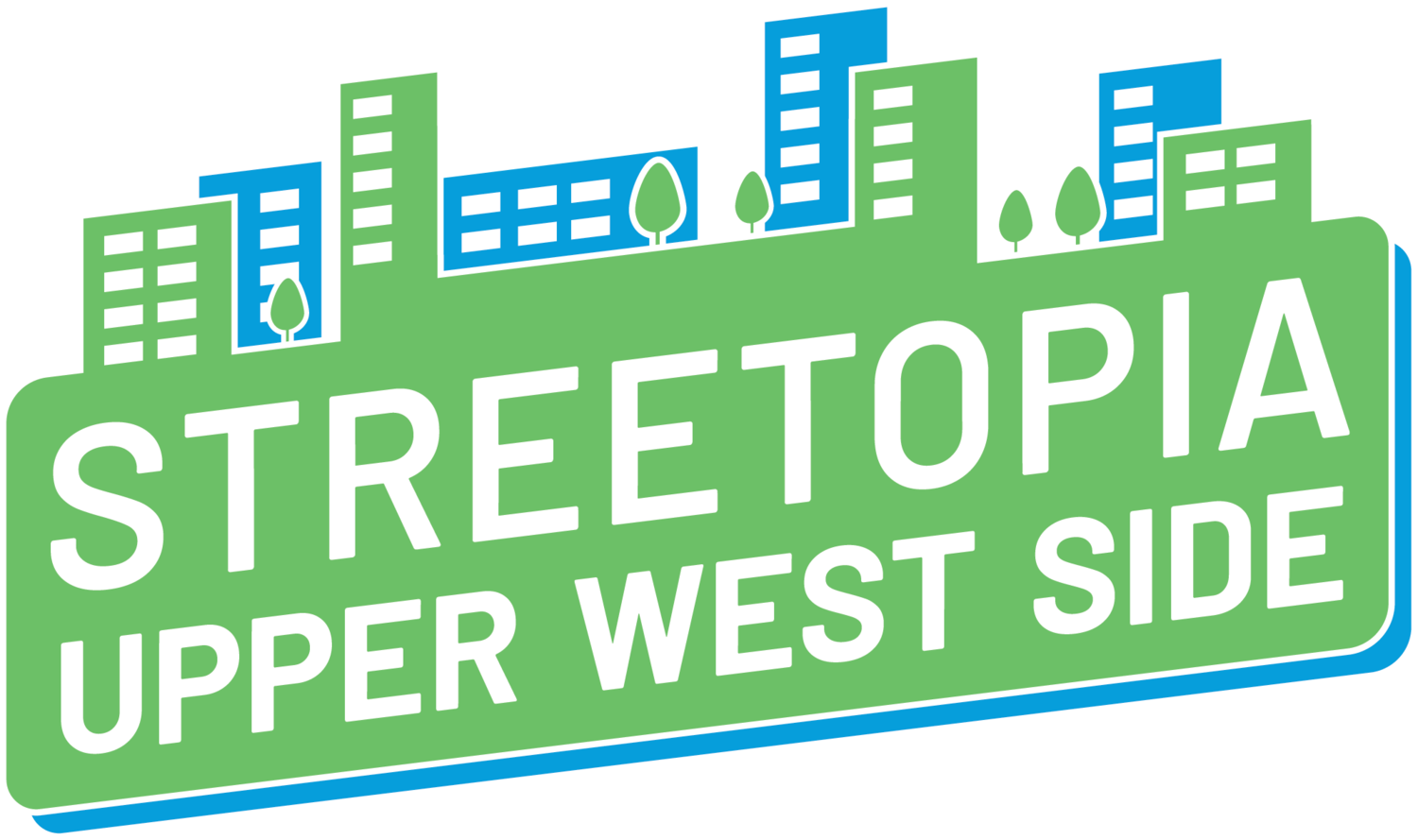Crosstown Protected Bike Lanes
Read our report: Getting There: Understanding the barriers to safe and convenient micromobility on the Upper West Side
Drivers never worry about roads ending without warning. Yet cyclists, who are choosing a form of transportation that promotes health, reduces congestion, and is better for our environment, frequently encounter conditions like lanes that suddenly end or having to jockey with fast-moving traffic. Protected bike lanes that connect and form a logical grid make cycling a pleasant, easy and safe choice available to people of all ages and abilities.
Manhattan scores only a 46/100 on People For Bikes’ Bike Network Analysis, which measures how well the bike network in a community connects people with the places they want to go. Traveling to destinations north or south has improved in the last decade, with protected bike lanes on Columbus, Amsterdam, the West Side Greenway and Central Park West. But vital east-west links that would make a true network of user-friendly, low-stress bike lanes are still missing. Fully protected bike lanes on 72nd, 79th, 86th, 91st, 92nd, 96th and 110th would allow people on bikes to get to work and school safely and to access our parks, the West Side Greenway, neighborhood errands, and the East Side.
Source: People for Bikes
Creating a network does more than help those who already bike. It is key to attracting more people to cycling, especially women and children. The steady growth in cycling in New York City shows there is a dormant interest in being able to cycle for transportation. Completing the bike network could fully unlock this potential.
While cross-town lanes will help cyclists, everyone benefits. As people have seen from Copenhagen to California to New York City--and as a 2003 study looking at 68 California cities, 47 towns in Denmark, and 14 countries in Europe showed—increasing the number of cyclists increases safety for all cyclists. Far from creating chaos on the streets, increasing the number of cyclists helps drivers get used to looking out for and safely interacting with them. Giving everyone a clear place to be on the street helps decrease conflict among all users. Though they are new and sometimes controversial, people riding scooters and other forms of micromobility need safe places to travel as well. Protected bike lanes allow space for all of these non-motorized transportation options, locating them in a predictable and orderly space. No more sidewalk terror. And no darting in and out of the travel lanes.
Shopping, visiting restaurants or places of worship, doing business, or just walking to the subway on arterial streets like 86th and 96th would also feel more pleasant and safer with bike lanes separating sidewalks from fast-moving traffic and contributing to traffic calming. Like daylighting, bike lanes physically narrow the street, which forces drivers to pay closer attention, thereby reducing traffic speeds. Furthermore, the pedestrian islands allow for greening the neighborhood and even potentially creating pollinating corridors from Park to Park. This combination of streetscape changes and greening creates opportunities for various coalitions to come together. Getting more people biking and reducing the space for driving improves our air quality and reduces noise pollution.
What about the economic impact of taking away parking spots on busy commercial corridors? Studies across the country have shown that repurposing parking or driving lanes for bike lanes has a neutral or positive effect on local business. Surveys of shoppers have shown that most people in urban areas walk, bike, or take transit to go shopping. While people biking and walking may spend less per trip than people driving, they also tend to take more trips. A neighborhood survey among shoppers on First and Second Avenues in the East Village, home to protected bike lanes, found that cyclists spent about $163 per week on average, compared to $143 among drivers. It works on the Upper West Side, too: a 2013 study of sales tax revenue by the DOT showed the 20 blocks of Columbus Avenue that received a protected bike lane and pedestrian safety islands saw sales increase 20 percent over two years, while adjacent sections of Columbus that did not get a bike lane saw sales increase by only 9 percent.
Source: NYC DOT
Bike lanes also save money: a study found that for every dollar invested in separated bike lanes, cities could save $24 on healthcare and costs related to pollution, and traffic. Making it easier and safer to get where people want to go on bikes creates a virtuous cycle of more people biking, which creates more safety, which invites even more people to bike. Cycling allows people to get exercise while accomplishing things they already planned to do and is inexpensive, never delayed, and empowering–it is no surprise multiple studies have shown bike commuters to be the happiest commuters!
Source: Smith 2013
Cross-town protected bike lanes support transportation, exercise, a healthy environment and a healthy local economy. We can’t afford NOT to implement them. Momentum is building. Cross-town protected lanes are already in place on 12th, 13th, 26th, 29th, 52nd, 55th, 61st & 62nd Streets. Let’s keep them rolling uptown! Subscribe to our newsletter here to receive our updates and get activated!




